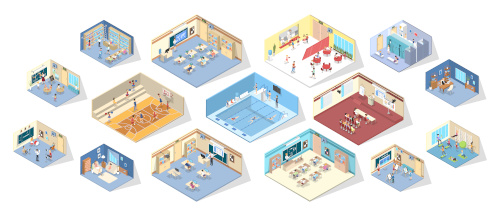
It’s the last day of summer break. You walk the halls, ducking your head into classrooms as you go. Each room looks ready for the year: inspiring quotes on walls, names on desks, chairs perfectly arranged. Every room except one, that is.
This particular room has boxes of books, containers of art supplies, and furniture pushed against the wall. You smile and move on, never doubting that this room will be one of the most creative, functional, and beloved rooms in just a few short days. It always is.
How will it get there? The students will make it happen.
Why get students involved?
Traditional teaching methods are evolving. Gone are the “chalk talk” days, where rows of desks facing the front of the classroom made sense.
Instead, project-based learning, flipped classrooms, and a prevalence of technology are the norm. Studies show classroom design affects student learning, so it’s important to design a space that matches 21stcentury learning styles. And who understands what they need better than the kids learning there?
That is the logic behind user experience (UX) classroom design and an important reason why it’s beneficial for students to play a role in designing their classrooms.
User experience (UX): the overall experience of a person using a product, especially in terms of how easy or pleasing it is to use.
In addition to students getting a say, student-designed classrooms come with other benefits. Tiffany Wycoff, a teacher and co-founder of an education consultancy, sums it up: “I’ve seen this in both my own classroom experience and my work with other schools… Setting up the room together noticeably builds a positive class culture that touches on the five hallmarks of effective learning practice: personalization, agency, audience, creativity, and connectivity.”
There are also benefits for teachers, which begin before the school year starts. Rather than preparing their classrooms, teachers can use the final weeks of break to finalize lesson plans and prepare for the year. Three cheers for bonus prep time!

